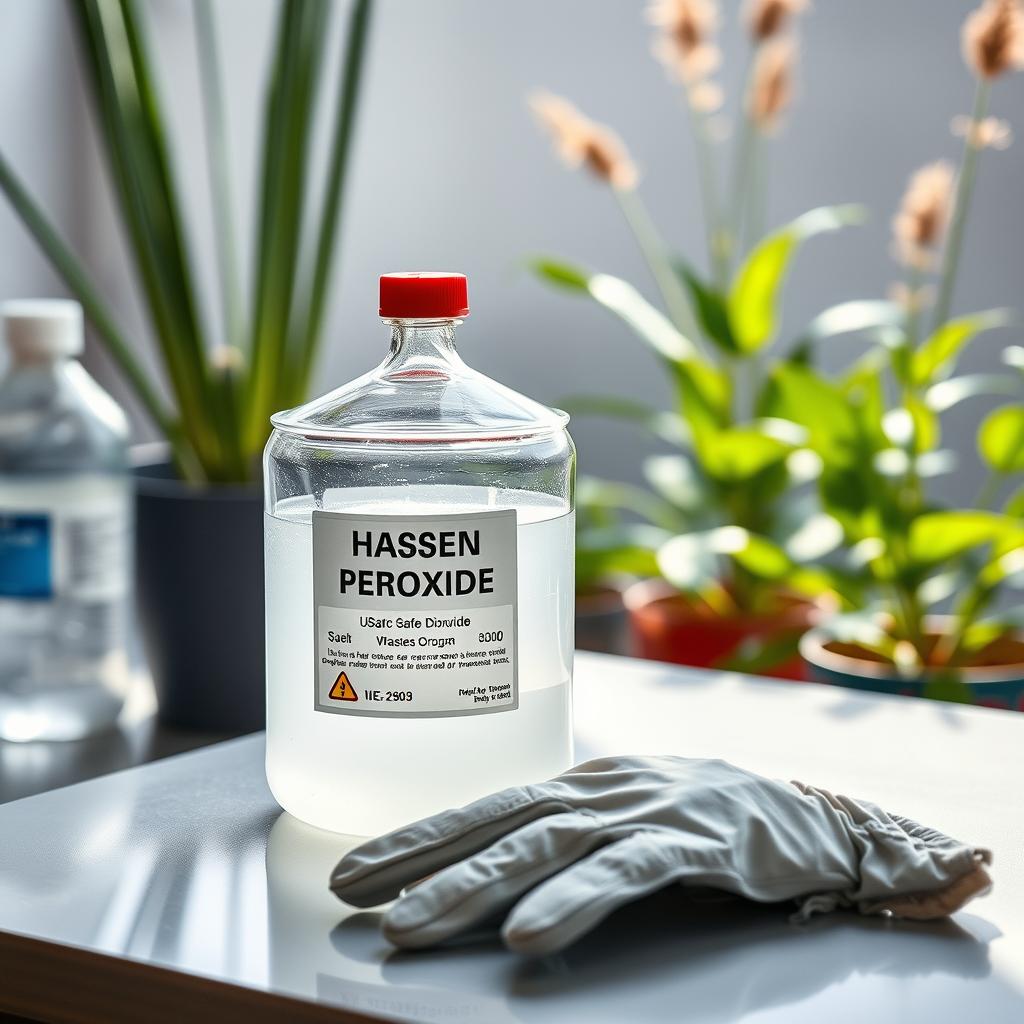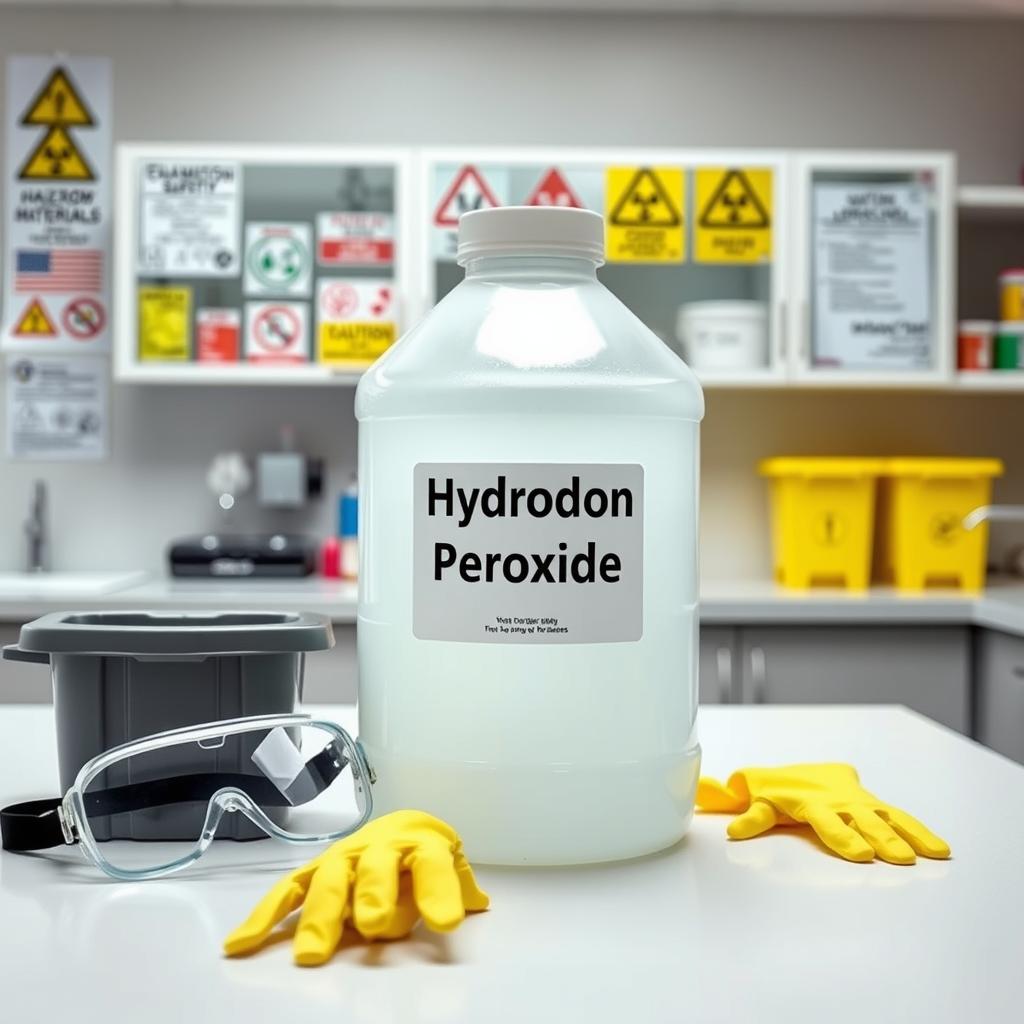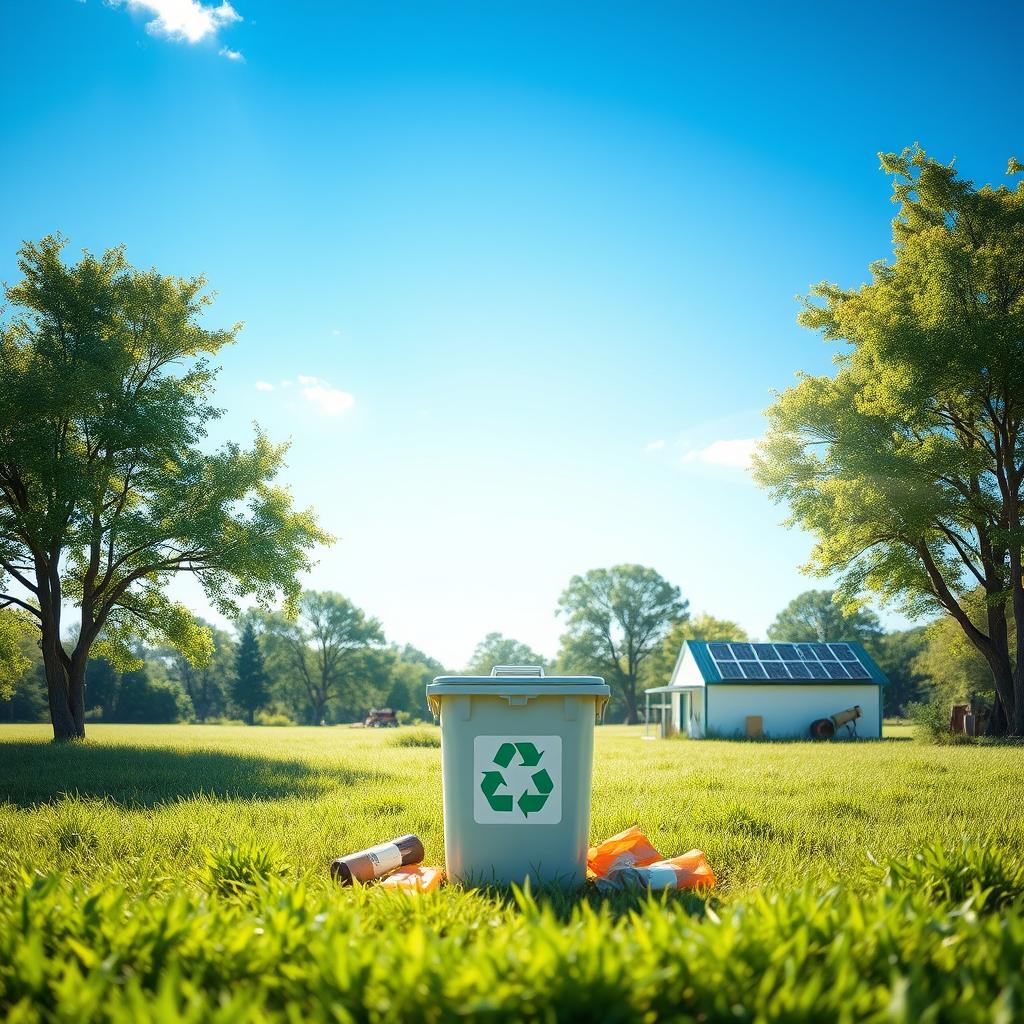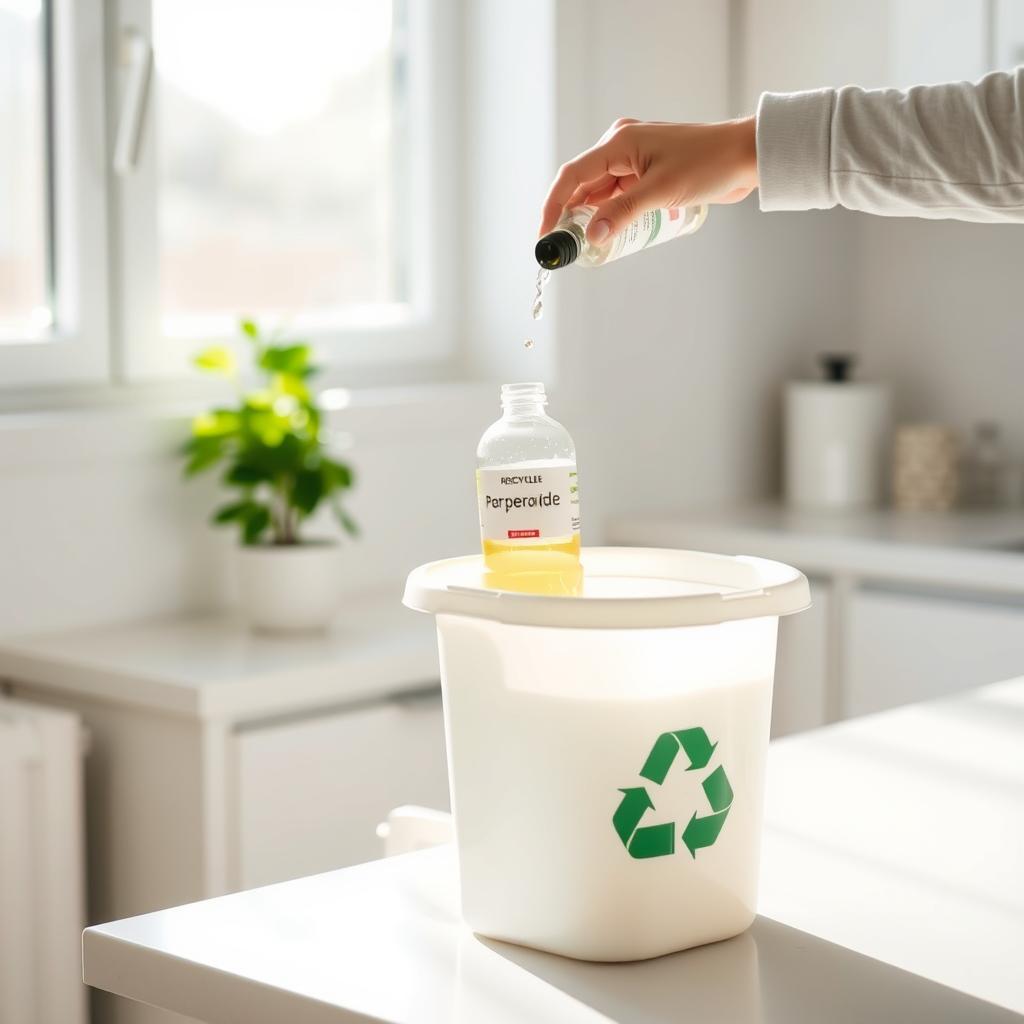Many people wonder how to safely dispose of hydrogen peroxide. Can you just pour it down the drain or throw it away? Or are there special rules to follow? Knowing how to dispose of hydrogen peroxide is key to keeping people and the environment safe. Disposing of hydrogen peroxide needs careful thought to prevent accidents and harm to the environment. This guide will show you how to do it safely and responsibly. We’ll cover the important steps and precautions you should take.
Click to use Silverigroup personal shopper services
Key Takeaways:
- Understanding the properties of hydrogen peroxide is essential for safe disposal.
- Following proper safety precautions is crucial when handling hydrogen peroxide.
- There are different methods for disposing of hydrogen peroxide depending on the quantity and concentration.
- Environmental impact considerations should be taken into account when disposing of hydrogen peroxide.
- Knowing the legal requirements and regulations for disposing of hydrogen peroxide is important.
- Special handling cases, such as expired products or contaminated solutions, require extra care.
Understanding Hydrogen Peroxide Properties
Hydrogen peroxide is a chemical with the formula H2O2, often used as a disinfectant. To dispose of it properly, knowing its properties is key. It’s made of hydrogen and oxygen, with strong oxidizing abilities. It’s important to understand hydrogen peroxide to dispose of it safely. It comes in different strengths, from 3% for homes to 90% for labs. Each type has its own uses and storage needs, so following the right disposal guidelines is crucial.
Chemical Composition and Stability
Hydrogen peroxide is made of two hydrogen atoms and two oxygen atoms. But, its stability can change due to light, heat, and other substances.
Click to buy citric acid from Silvairgroup
Common Concentrations and Uses
Hydrogen peroxide is found in various strengths, including:
- 3%: used for cleaning and disinfecting at home
- 35%: for industrial and lab work
- 90%: for special uses, like rocket fuel
Storage Requirements
Safe storage and handling of hydrogen peroxide are vital. Here are some key storage tips:
| Concentration | Storage Requirements |
|---|---|
| 3% | Keep it in a cool, dry spot, away from light |
| 35% | Store it in a well-ventilated area, away from heat |
| 90% | Use a special container, with good ventilation and temperature control |
Safety Precautions Before Disposal
When dealing with how to safely dispose of hydrogen peroxide, safety is key. Wear gloves and goggles, keep the area well-ventilated, and know how hydrogen peroxide reacts with other things. Knowing these safety steps helps avoid injuries and harm to the environment. Important guidelines for handling chemicals like hydrogen peroxide include:
- Wearing protective clothing, including gloves and goggles
- Ensuring good ventilation in the area
- Being aware of potential reactions with other substances
- Following the manufacturer’s instructions for handling and disposal
Click to buy frozen a grade beluga fish from Silverigroup
By following these steps, you can reduce risks when handling hydrogen peroxide. Remember, how to safely dispose of hydrogen peroxide needs careful planning and safety focus. It’s also important to know the dangers of hydrogen peroxide. It can react with other substances and cause burns or injuries. By understanding these risks and taking precautions, you can dispose of hydrogen peroxide safely.
Safe disposal of hydrogen peroxide requires a thorough understanding of its properties and potential hazards, as well as careful planning and attention to safety guidelines.
| Safety Precaution | Importance |
|---|---|
| Wearing protective clothing | High |
| Ensuring good ventilation | High |
| Following manufacturer’s instructions | Medium |

How to Dispose of Hydrogen Peroxide Safely
When you need to get rid of hydrogen peroxide, think about how much and what strength it is. It’s important to know how to handle it safely. For small amounts, you can mix it with a special catalyst and then throw it down the drain. But, if you have a lot of hydrogen peroxide, you’ll need to call in the pros. They know how to get rid of it without harming the environment. They follow strict rules for labeling and transporting it to the right place.
Some key tips for safe disposal include:
- Wearing protective gear, such as gloves and goggles
- Using a well-ventilated area to prevent inhalation of fumes
- Avoiding mixing with other chemicals, which can cause reactions
It’s vital to follow the best practices for disposing of hydrogen peroxide. This way, you avoid accidents and protect our planet. By knowing the chemical’s properties and following the right steps, you can dispose of it safely. Remember, the strength of hydrogen peroxide matters for disposal. Household stuff can usually go down the drain. But, industrial-strength needs special care.
| Concentration | Disposal Method |
|---|---|
| Household grade (3%) | Sewer system |
| Industrial grade | Professional disposal services |
| Laboratory grade | Specialized disposal facilities |

Environmental Impact Considerations
When we talk about getting rid of hydrogen peroxide, environmental considerations are key. The wrong way to dispose of it can really harm our planet. For example, it can pollute waterways and hurt fish and other sea creatures. So, it’s important to think about how our actions affect the environment and choose safe ways to get rid of it. To dispose of hydrogen peroxide in a way that’s good for the planet, we need to follow local rules. Here are some important things to remember:
- Check the strength of the hydrogen peroxide solution
- Use containers that are approved for disposal
- Don’t pour it down storm drains or into waterways
By keeping these environmental considerations in mind, we can reduce the harm caused by disposing of hydrogen peroxide. Also, some places have special places for throwing away hazardous waste, like hydrogen peroxide. Using these places helps make sure our waste is handled safely and doesn’t hurt the environment.
Different Disposal Methods for Various Concentrations
Disposing of hydrogen peroxide depends on its concentration. To how to safely dispose of hydrogen peroxide, knowing the right disposal methods is key. Household hydrogen peroxide, at 3% concentration, can be diluted with water and drained, if sewer systems allow it.
For stronger solutions, like industrial or lab grades, special disposal steps are needed. These might include neutralizing and sending it to licensed places. It’s important to follow proper disposal rules to avoid harming the environment and keep people safe. Here are some disposal tips for different hydrogen peroxide levels:
- Household grade (3%): dilute with water and pour down the drain, if allowed by local regulations
- Industrial grade: neutralize and dispose of through licensed facilities
- Laboratory grade: follow specific guidelines for disposal, which may include neutralization and disposal through licensed facilities
Knowing how to dispose of hydrogen peroxide safely is crucial. By following the right disposal steps, we protect our environment and avoid health risks. This ensures we handle hydrogen peroxide correctly.

Common Mistakes to Avoid During Disposal
When getting rid of hydrogen peroxide, it’s key to follow hydrogen peroxide disposal guidelines. This ensures safety and meets legal standards. A big mistake is mixing hydrogen peroxide with other chemicals. This can cause harmful reactions. Also, using the wrong containers can lead to spills or leaks. To practice safe disposal practices, knowing these mistakes is crucial. Here are some common errors to steer clear of:
- Mixing hydrogen peroxide with other chemicals
- Using improper containers
- Not following the recommended disposal methods
By sticking to hydrogen peroxide disposal guidelines and watching out for these mistakes, people can ensure safe disposal practices. This protects both themselves and the environment. Proper disposal of hydrogen peroxide is vital for a safe and healthy world. By avoiding common errors and following safe disposal practices, we can help make the future greener.
| Mistake | Consequence |
|---|---|
| Mixing hydrogen peroxide with other chemicals | Dangerous reactions |
| Using improper containers | Leakage or spillage |
Legal Requirements and Regulations
When you need to get rid of hydrogen peroxide, there are legal requirements to follow. These rules help keep our environment and health safe. To dispose of hydrogen peroxide right, you must follow local and national laws. Some important parts of these rules are:
- Proper handling and storage of hydrogen peroxide
- Guidelines for disposal, including methods and locations
- Requirements for labeling and packaging
Knowing these legal requirements is key to avoid fines and ensure safe disposal. It’s vital to check the specific rules in your area to dispose of hydrogen peroxide the right way.

By sticking to these guidelines and rules, we can all help make disposal safer and better for the environment.
Special Handling Cases
Disposing of hydrogen peroxide needs special care in certain situations. These cases are key to keeping everyone safe and protecting the environment. It’s important to know how to handle expired products, contaminated solutions, and emergencies.
Handling expired or contaminated hydrogen peroxide is critical. These products can be more dangerous than regular ones. For example, expired hydrogen peroxide might have turned into harmful substances. Contaminated solutions can also be risky for people and the planet.
Expired Products
Expired hydrogen peroxide needs careful disposal. It can be unstable and dangerous. Always follow the right steps for disposing of expired products.
Contaminated Solutions
Contaminated hydrogen peroxide is very hazardous. It might contain harmful substances. It’s vital to follow the proper disposal methods to avoid risks.
Emergency Situations
In emergencies like spills, quick and careful action is needed. Knowing how to dispose of hydrogen peroxide in these situations is crucial. It helps prevent accidents and protects the environment.
Understanding and following special handling guidelines is key. It ensures hydrogen peroxide is disposed of safely. This protects the environment and prevents accidents. Remember, proper disposal is critical, especially in special cases.
Conclusion
Properly getting rid of hydrogen peroxide is key to keeping everyone safe. It’s important to know how it works and follow safety rules. This way, we can avoid the dangers it poses. This guide has shown you how to dispose of hydrogen peroxide the right way. It talks about handling it based on its strength, following the law, and thinking about the planet. Disposing of it correctly is not just about following rules. It’s also about taking care of our planet for the future. Whether you live in a house, run a business, or work in a lab, making smart choices about disposal matters. By choosing to dispose of hydrogen peroxide safely, we can all help make the world a better place.
FAQ: How to Dispose of Hydrogen Peroxide
What is the proper way to dispose of hydrogen peroxide?
Disposing of hydrogen peroxide depends on its concentration and amount. For small amounts of 3% household-grade, mix it with water and drain it. But, for larger volumes or higher concentrations, you need special disposal. This includes neutralization and disposal at a licensed hazardous waste facility.
How can I safely dispose of hydrogen peroxide?
To safely dispose of hydrogen peroxide, follow these steps: – Wear gloves and goggles for protection – Make sure the area is well-ventilated – Don’t mix it with other chemicals – Label and contain the hydrogen peroxide properly – Follow local rules for chemical disposal
What are the environmental considerations for disposing of hydrogen peroxide?
Improper disposal of hydrogen peroxide can harm the environment. It can pollute water and harm aquatic life. Always choose disposal methods that are safe for the environment. Check local regulations for guidance.
How do I dispose of different concentrations of hydrogen peroxide?
Disposal methods vary by concentration: – Household-grade (3%) can be diluted and drained, if sewer systems can handle it. – Industrial and lab-grade, being more concentrated, need special disposal. This includes neutralization and disposal at licensed facilities.
What are some common mistakes to avoid when disposing of hydrogen peroxide?
Avoid these common mistakes: – Don’t mix hydrogen peroxide with other chemicals – Use proper containers to avoid leaks or spills – Always follow local rules for chemical disposal
What are the legal requirements for disposing of hydrogen peroxide?
Disposing of hydrogen peroxide has legal requirements that vary by location. These rules protect the environment and public health. It’s crucial to understand and follow these laws to avoid penalties.
How do I dispose of expired or contaminated hydrogen peroxide?
Expired or contaminated hydrogen peroxide needs special care. Expired products can be harmful, and contaminated solutions pose risks. For guidance, contact a hazardous waste disposal service or local authorities.

